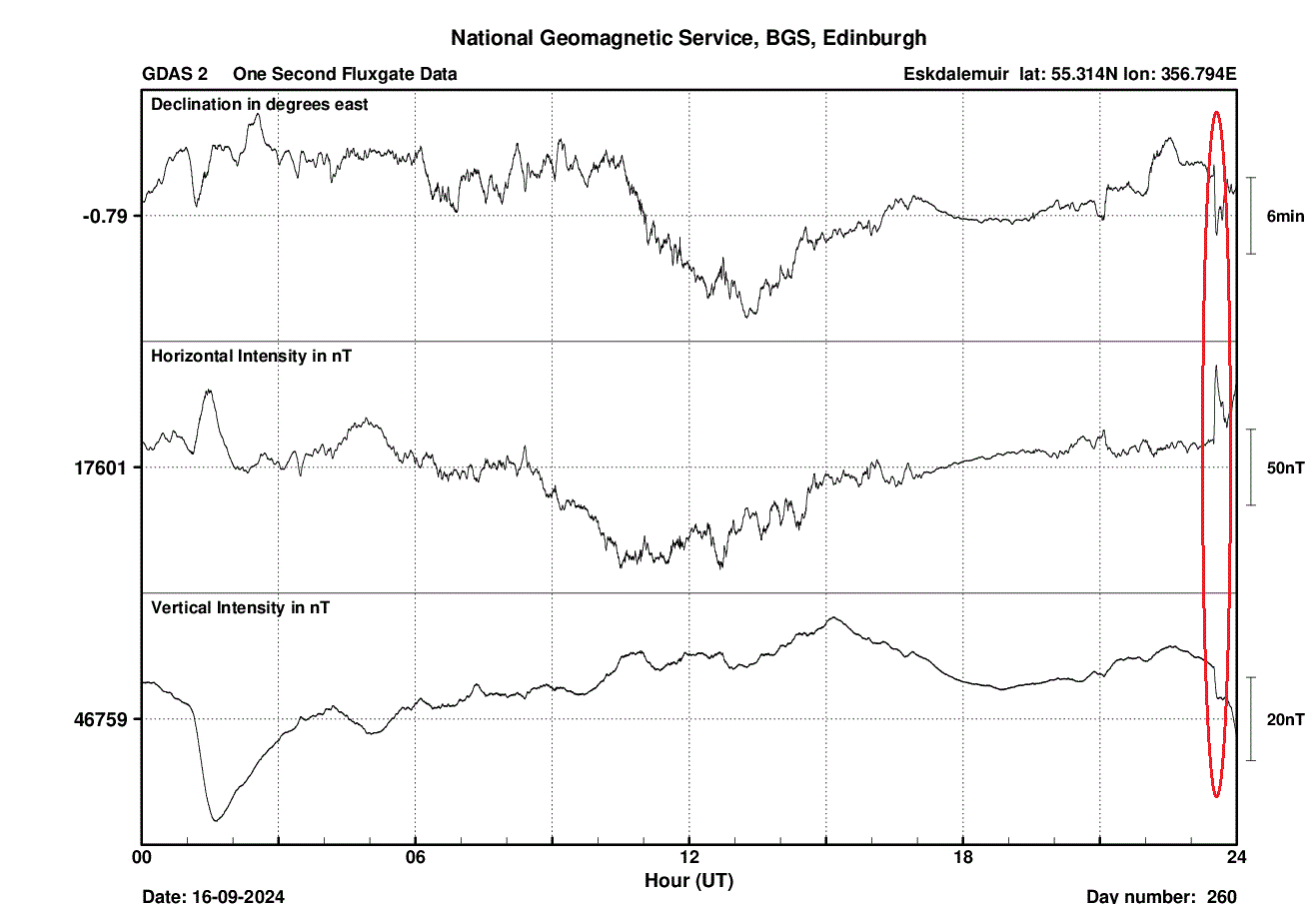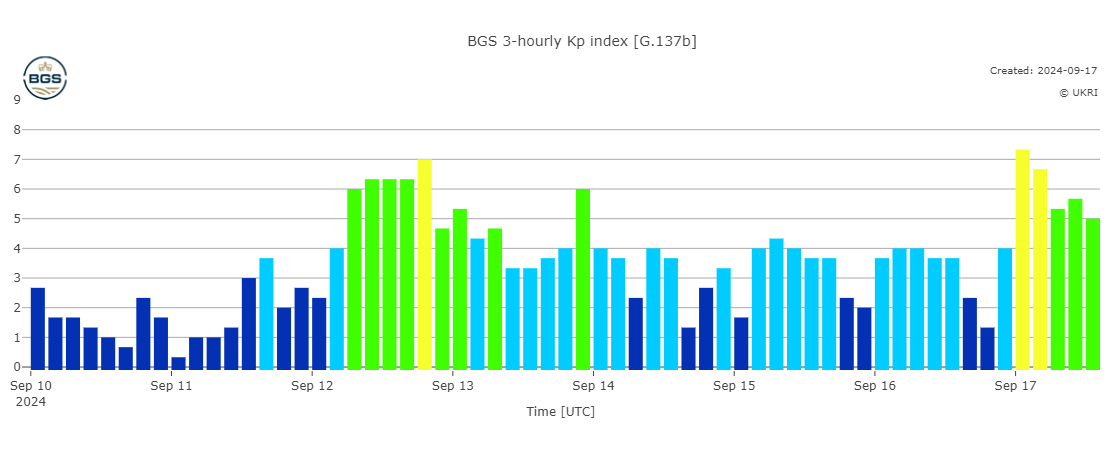Geomagnetic storm update - 17th September 2024
What Has Happened?
One of the coronal mass ejections (CMEs) that left the Sun on 12th Sep arrived on the 14th causing geomagnetic activity to increase to STORM G2 (Geomagnetic storm scales).
A full-halo CME lifted from the Sun on the 14th Sep, associated with an X4.5 flare, which arrived late on the 16th. A sudden storm commencement was recorded in the magnetic field measurements at 23:29 UT. Geomagnetic conditions reached STORM G3 levels in response. Residual effects from this event are continuing, but with a declining trend in intensity.
Assuming clear dark skies, there is an increased chance of seeing the aurora tonight (17th Sep). Those in Scotland, northern England and Northern Ireland have the best chance if the weather is favourable.
Sign-up to receive Geomagnetic Storm Forecast emails.
Follow us on X:
Follow @BGSauroraAlert for more occasional aurora alerts.
Follow @BGSspaceWeather for daily space weather forecasts.
Glossary
- BGS
- The British Geological Survey is a geoscience research centre that is part of UK Research and Innovation (UKRI) and affiliated to the Natural Environment Research Council (NERC).
- CME or Coronal Mass Ejection
- The eruption of a portion of the outer atmosphere of the Sun into space, caused by rapid changes in its magnetic field. Often occurs along with a solar flare.
- Solar Flare
- Energy released by the explosive reorganisation of magnetic fields within the Sun's atmosphere.
- Sudden Storm Commencement
- An unexpected sharp increase in the Northern (X) magnetic component of a considered observatory (SSC).




